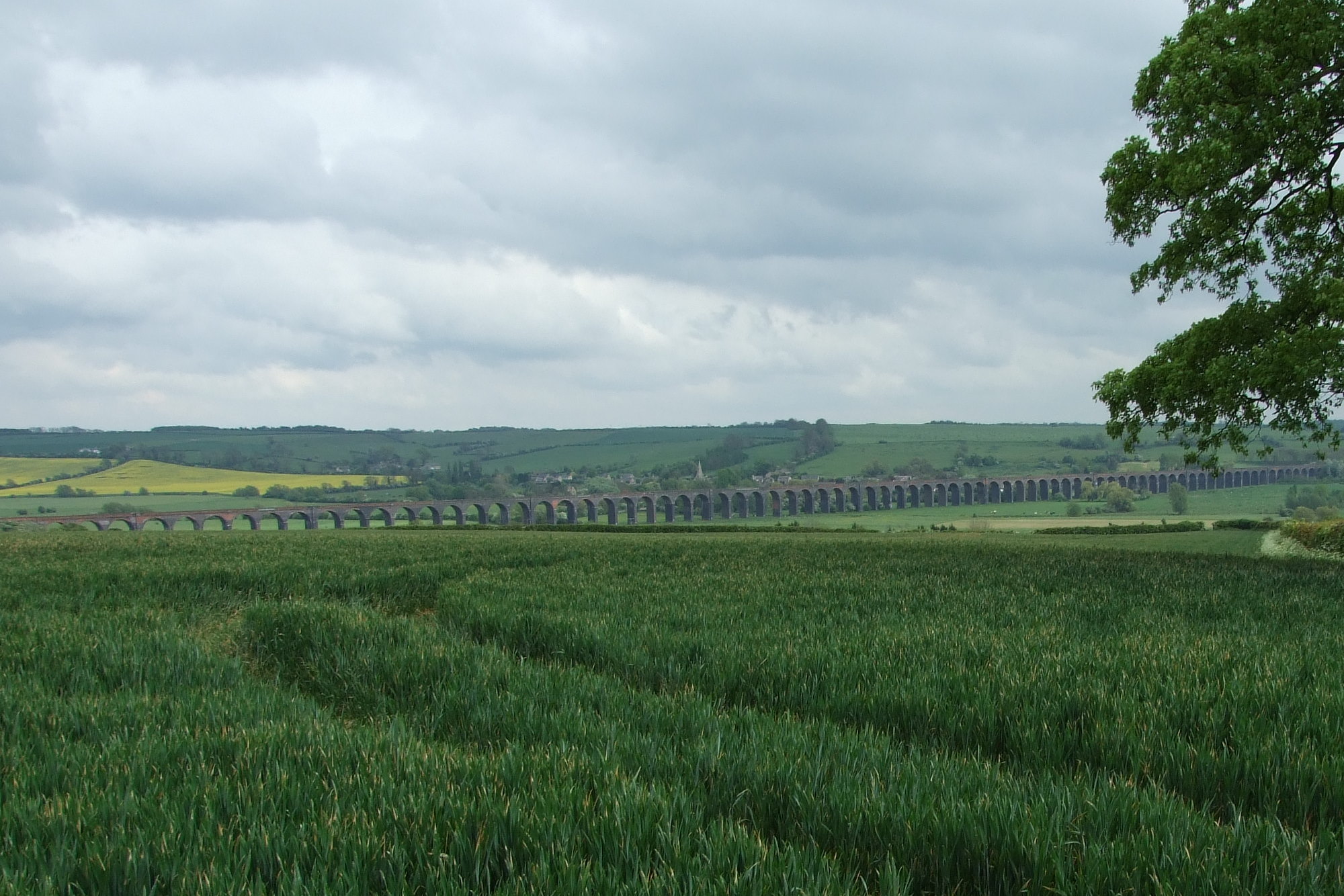- Welland Viaduct
Infobox Bridge
bridge_name=Welland/Harringworth Viaduct
caption=
official_name=Welland Viaduct
carries=Oakham to Kettering Line
crosses=River Welland
locale=Rutland
maint=Network Rail
id=
design=
mainspan=
length=1275 yards (1166 m)
width=
height=60 feet (18 m) maximum
load=
clearance=
below=
traffic=
begin=
complete=
open=1878-1880 [Sources vary.]
closed=
toll=
map_cue=
map_
map_text=
map_width=
coordinates=gbmapping|SP915975Welland Viaduct, also known as Harringworth Viaduct and Seaton Viaduct, [The name Seaton Viaduct is the official name of another smaller viaduct a mile further north, but the name is applied by local residents to Welland Viaduct, as evidenced in this historic [http://special.st-andrews.ac.uk/saspecial/index.php?a=indexes&s=item&key=IYToxOntpOjA7czoxNzoiUnV0bGFuZCBhbGwgdmlld3MiO30=&pg=1 postcard] .] is a
railway viaduct which crosses the valley of theRiver Welland betweenHarringworth inNorthamptonshire and Seaton inRutland ,England . It is 3/4 of a mile long and has 82 arches, each of which has a 40 ft span. It was completed in around1878 , and is the longest masonry viaduct across a valley in Britain.Welland Viaduct lies on the
Oakham to Kettering Line and carries the twin track non-electrified line between stnlnk|Corby and Manton Junction, where it joins the Leicester to Peterborough line. The route is generally used for the passage offreight train s and steam train outings, though it is also available as a diversionary route forEast Midlands Trains mainline services, using theMidland Main Line route.The line and structure is a favourite with steam train and heritage enthusiasts, carrying a Grade II Listed Structure status and dominating this picturesque rural valley.
Due to the structure’s size, age, exposure and inaccessibility, the original brickwork was suffering from extensive weathering and structural deterioration. As part of the
Network Rail Structures maintenance programme,Birse Rail was remitted to carry out structural repairs to the viaduct. Traditional methods and materials were employed alongside modern access techniques to return the structure to its former glory and to ensure the long-term structural integrity of the viaduct as well as the enjoyment of generations to come.The viaduct was built using Williamson-Cliffe bricks. Repairs have employed other types of bricks, leaving a patchwork appearance.
Notes
References
*cite book |last= John Marshall|title= The Guinness Book of Rail Facts & Feats|year= 1979|publisher= Guinness|location= |isbn= 0-900424-56-7
*cite book |last= Jack Simmons & Gordon Biddle (editors) |authorlink= |coauthors= |title= The Oxford Companion to British Railway History|chapter=Entry for bridges and viaducts |year= 1997|publisher= Oxford University Press|location= |isbn= 0-19-211697-5
Wikimedia Foundation. 2010.
